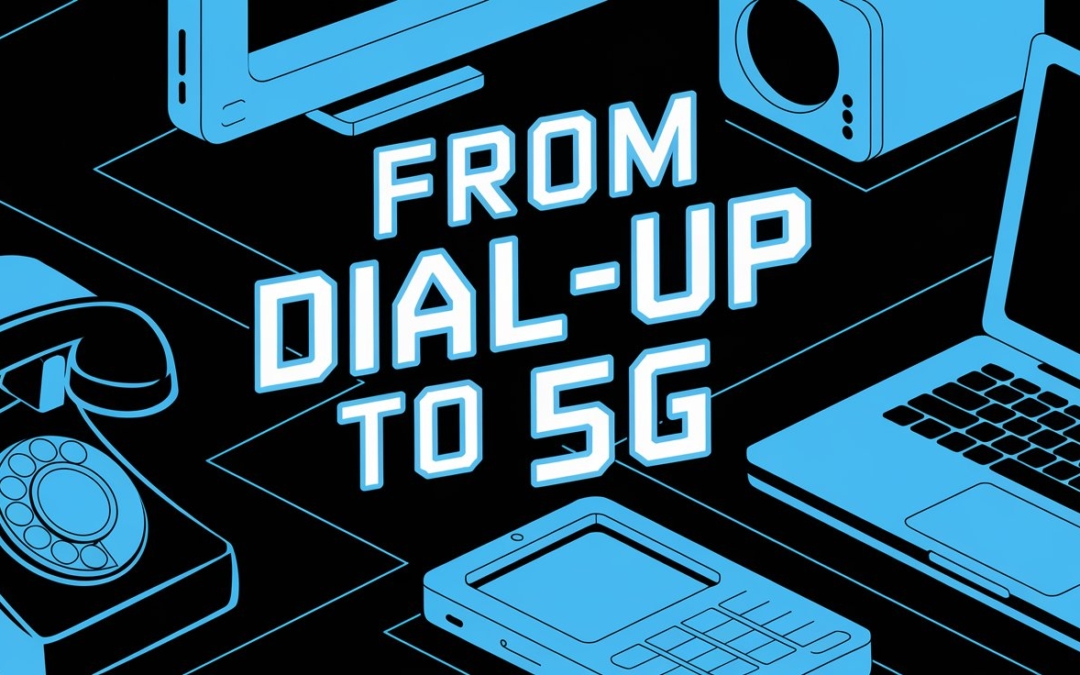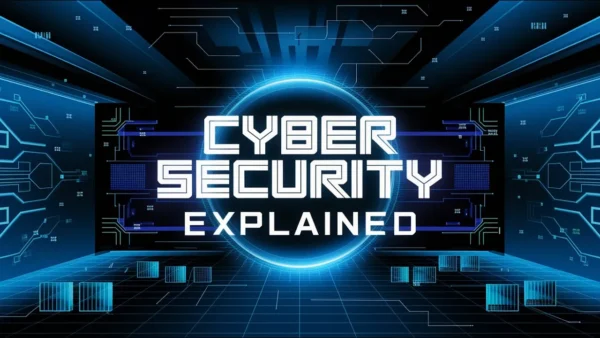The Amazing Evolution of Internet Connectivity: From Noisy Dial-Up to Lightning-Fast Fiber
The internet has changed a lot, from noisy modems tying up your landline, to smarter cities powered by fiber that move faster than thought. Let’s take a tour through the evolution of Internet connectivity and the timeline of the digital world to highlight how far we have come and what is next.
Dial-Up Internet – The Humble Beginning
Before high-speed internet connections and WiFi, there was dial-up. For many, dial-up was their very first experience on the internet. It was slow, it was noisy, and it was every bit the magic everyone said it was.Dial-up internet worked via the public switched telephone network (PSTN) where a modem would convert digital signals into tones that you could hear and that could travel via the normal phone lines. That screeching, robotic voice you heard when you tried to connect your computer to the internet was actually the sound of computers negotiating a connection with the modem in your computer.
At its best, dial-up offered speeds ranging from 28.8 to 56 Kbps. Your Internet Service Providers (ISPs) were familiar names like AOL, EarthLink, and NetZero, and the actual web browsing was done in one of the early web browsers—Netscape Navigator or Internet Explorer. But dial-up had lots of problems. The most disturbing of which was that you tied up your home phone line; no one could use the telephone while you were connected to the internet, and it would not be unusual for your connection to drop unexpectedly or take what seemed like an eternity to load.
Nevertheless, it was the portal that millions accessed, and in many ways, normal people experience of accessing the internet and browsing the web began here. It is, therefore, the basis for what followed.
The Broadband Boom – DSL, Cable, and WiFi
The early 2000s witnessed a huge shift away from the novelty of internet access to it being an integral resource for us. Broadband ushered in an era where your digital experience was better, with more consistent online connections, and a significantly faster experience integration into your daily enjoyment and productivity. Broadband promised you to be connected all the time with vastly improved performance. DSL (Digital Subscriber Line) used existing telephone infrastructure, while cable internet used coaxial cable (again developed for television).
Either way, you were able to enjoy significantly faster speeds than dial-up internet provided; you receive data at megabits per second (actually 1000 times faster), rather than kilobits per simply the luxury of being able to stay connected to the internet while talking on the telephone. Multitasking on the web became the new normal, as performing work, education, and leisure activities became part of the daily routine.
Of course, then we had wireless internet, or Wifi – which limited the need to have any physical connectivity. When wireless routers began to emerge, the ability to be connected from your house, office, restaurant, café, and even airport demonstrated how valuable getting rid of all physical connectivity was. Wifi ushered in remote work, online schooling, redesigned public spaces, and mobility which renewed the attractiveness of laptops and mobile devices. You were no longer limited to simply having access to the internet, if you had distance and a power source, you could be connected.
Fiber-Optics and 5G – Entering the Speed Era
The growth of technology and increasing demands on the internet greatly affected the internet infrastructure. Enter fiber-optics and 5G: two major technologies currently transforming our experience of high-speed, hyper-connected communication.
Fiber-optic internet uses glass fibers and transmits data through light signals to provide tremendous speed and reliability. It can transmit data over long distances with minimal signal lost, which makes it perfect to support reasons where the need for bandwidth is significant such as streaming, cloud computing, or gaming. Fiber allows consumers to take advantage of gigabit download and upload speed, a lower latency and is a very reliable service overall.
Fiber is the backbone of the modern age internet infrastructure, including modern smart cities where the need for connectivity must support nearly every aspect of your city experience from dealing with traffic systems to public WiFi.5G has completely changed mobile access to the internet by providing ultra-fast, low-latency connections while you are on the move.
Beyond improved browsing on your smartphone, 5G enables new use cases across industries like healthcare, transportation, education, and government. 5G can use remote medical procedures, allow uninterrupted communications between autonomous vehicles, and develop immersive learning through augmented and virtual reality in real-time, and communicate with highly efficient, data-driven services to your city. Areas and nations that invest these technologies will multi-functional be most cite cheaper, efficient, and accessible to best prepare for the future.
Looking Ahead – The Connected Future
The fiber optic cables and 5G infrastructure that underlie our current Internet is only the tip of the iceberg. We are on the brink of incredibly disruptive advancements in the way we connect, compute, and communicate with one another. Quantum computing exists on the horizon with the potential to unleash processing capabilities orders of magnitude beyond anything we could even on imagine on today’s computing platforms, and help us solve problems we never thought possible.
Augmented and virtual reality will move into the realm of everyday use, not just for entertainment, but employment, education, and training. Internet connectivity will soon be sourced from above, as satellite constellations like Starlink work to offer global connectivity from space. Artificial intelligence will increase collaboration with the Internet of Things (IoT) to add an explosive wave of smart, connected devices, capable of communicating autonomously to optimize everything from our homes to our cities. Not only will these advances improve speed, they will transform the very definition of being online.
Why This Evolution Matters for You
It can be easy to overlook the fact that the evolution of connectivity and the internet is not just interesting for techies, it impacts everyone who connects online. If you are running a business, learning new skills or just watching your favorite streaming service – connectivity is at the center of how we live.For businesses, faster internet and better connectivity means better reliability and smoother operations for customers, friends and employee interactions.
Digital marketing, e-commerce platforms, remote collaboration and data analytics all require reliance on successful connectivity and its good infrastructure. Investing in good connected devices can give business a great opportunity in a competitive situation.For individuals, we can imagine the opportunities created by high-speed internet for education, job opportunities, telemedicine, entertainment for days, to stay in touch with friends and contact an unlimited amount of information at the click of a button. The more connected we are, the more we have the opportunity to influence our own futures.
Final Thoughts: From Screeches to Speed, The Evolution of Internet Connectivity
From Noises to SpeedThe progression from the sounds of dial-up modems to the seamless speed of fiber and 5G has shown the evolution of internet connectivity through the ages. Each era, regardless of how clunky or primitive compared to today, had implications that supported the connected world we often take for granted today.And we are not finished.While looking at a future where we have smart cities, networks driven by AI, and digital experiences emerging into our worlds; one thing we know is that the internet will continue to evolve and change what is possible.
Ready to Take Your Business Into the Future?
At Modularity Networks, we help businesses adapt and succeed within a digital world. Whether it is websites, SEO, digital marketing, or technology consulting, our strategies are built for a modern internet. Book a consultation today to take the next step into business growth.







